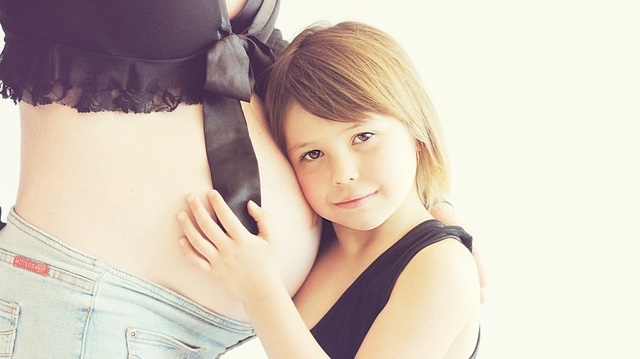Eldest daughter syndrome is a fact. And scientists from UCLA think that they may have found the reason why eldest daughters tend to behave the way that they do, taking on many parental responsibilities, and it is not just because they are older than their siblings.
In their report published in “Science Direct,” the researchers linked the behavior to the way in which pregnant women behave during their pregnancies if they already have one daughter to lean on emotionally, specifically a daughter. This can lead to what is called adrenal puberty.
Will you offer us a hand? Every gift, regardless of size, fuels our future.
Your critical contribution enables us to maintain our independence from shareholders or wealthy owners, allowing us to keep up reporting without bias. It means we can continue to make Jewish Business News available to everyone.
You can support us for as little as $1 via PayPal at office@jewishbusinessnews.com.
Thank you.
Adrenal puberty typically occurs between the ages of 6 and 8 in girls and 7 and 11 in boys. Also known as adrenarche, it is triggered by the increasing activity of the adrenal glands, which are located on top of each kidney. The adrenal glands start to produce more androgens, which are hormones that are similar to testosterone. And so the girls hit puberty at an earlier age, which the UCLA scientists linked to eldest daughter syndrome.
“This is a first-of-its-kind finding and is fascinating to look at through an evolutionary lens,” said UCLA anthropologist Molly Fox, who led the study with colleagues from UC Irvine, UC Merced, Chapman University and the University of Denver.
Eldest daughter syndrome (EDS) is a term used to describe a set of experiences and challenges faced by eldest daughters in a family. It’s important to note that EDS isn’t an official clinical diagnosis, but rather a concept that resonates with many women.
EDS centers on the idea that eldest daughters often carry a significant emotional weight within the family. Its possible causes include “Parentification.” This is where a child takes on parental roles, like caring for younger siblings or managing household chores. Also, eldest daughters suffer from high expectations: Eldest daughters may feel pressure to excel academically, be responsible, and set a good example.
The traits of someone with EDS include a strong sense of responsibility, people-pleasing tendencies, difficulty expressing needs, perfectionism, anxiety or depression, and feeling resentful towards family.
EDS is not universal. Not all eldest daughters experience these challenges, and family dynamics play a big role.
According to UCLA, the study was the first to identify earlier patterns of adrenal puberty as a result of prenatal stress. Adrenal puberty is marked by changes like the growth of body hair, pimples and aspects of cognitive maturation, but does not include breast development or the onset of menstruation for girls or testicular enlargement for boys.
The scientists measured women’s stress, depression and anxiety levels at 15-, 19-, 25-, 31- and 37-weeks’ gestation to create a prenatal psychological distress composite score. They were also assessed at two to three months postpartum to assign a postnatal distress composite score. The depression assessment asked respondents to rate the truth of statements such as “I felt lonely.” An example of an anxiety question was how often they felt particular symptoms, such as “jittery.”
At ages 8–10, 11–12 and 13–16, children’s biomarkers of adrenal and gonadal puberty were separately measured, including body hair, skin changes, growth in height or growth spurts, breast development and the onset of menstruation (in females), voice changes and facial hair growth (in males). Hormone levels that are indicators of adrenal and gonadal puberty were measured through saliva samples at all assessment stages.
The study also measured childhood adversity to account for other factors known to correlate to early maturation or signs of puberty in children and adolescents. These included the death of a parent or parental separation before age 5, the absence of the father and low income-to-needs ratios experienced at ages 7–9.
“This research adds to the body of knowledge in our field showing the significant and lifelong impacts to women and their offspring when it comes to prenatal emotional, environmental and other factors,” Molly Fox said. “This is important as we continue to come up with practical and policy solutions that contribute to greater access to healthcare and the general wellbeing of pregnant mothers.”




